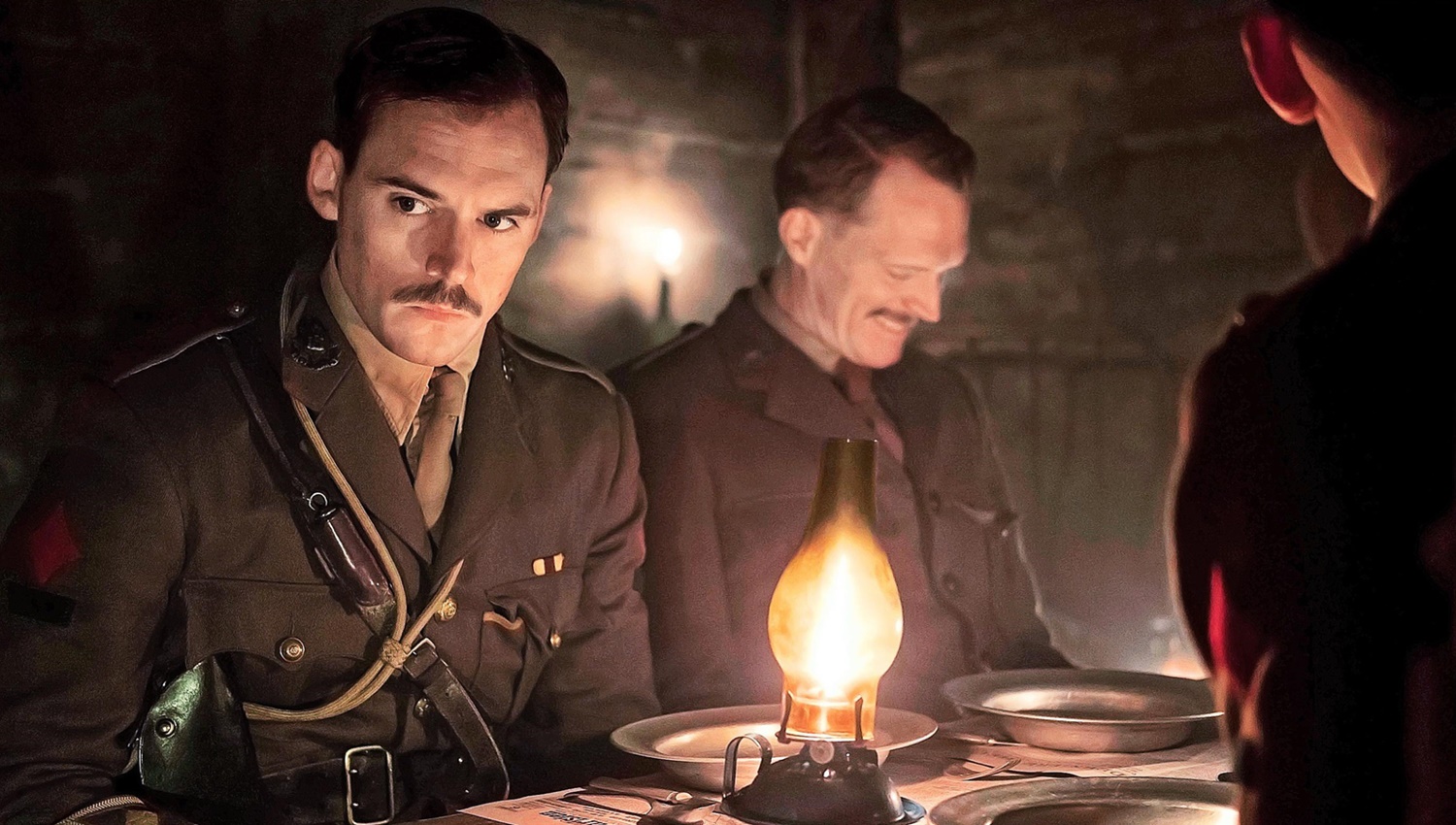
Journey’s End
Dustin Chase
Sam Claflin forgoes his usual romantic-leading-man role for a muddy cerebral one in the trenches of this World War I drama. Journey’s End opens at an almost stagnant pace, with no score, only uniformed men talking and moving around. When Paul Bettany (The Avengers) finally gets on screen, the story livens up a bit. To his credit, Claflin (Me Before You, My Cousin Rachel) is attempting something different with this role. Behind the awkward mustache and eerie silent dread, is an actor desperate to piggyback off the moderate success he’s attained as “that guy.” The same could be said for Asa Butterfield who started as a kid actor in films like The Space Between Us and Hugo.
It’s 1918 and C-Company find itself on the battlefront, facing an aggressive German force armed with machine guns. The young men are led by an equally young Captain Stanhope (Claflin), who spends as much time on the bottle as he does attempting to keep up the morale of his men. “I can’t bare being fully conscious all the time,” Stanhope barks. Raleigh (Butterfield), a naive young soldier who knew Stanhope in civilian life, arrives at the front, eager to serve under his friend. Both Stanhope and his trusted Osborne “Uncle” (Bettany), understand their days are numbered. Stanhope, altered by the war, is ashamed for a former student to see him in this condition. The men all brace themselves for the inevitable as they await orders from above.
Journey’s End doesn’t make a mark on the war genre or offer anything cinematically stimulating.
The title foretells this story’s lack of a happy ending. Director Saul Dibb’s (The Duchess) adaptation of the Tony award-winning play, examines the subtleties of leadership among the various ranks. Half guided by honor, half by liquor, this group of young soldier’s cope with fatalism and find the courage to follow their orders to their deaths. The official synopsis of Journey’s End describes Captain Stanhope as “mentally disintegrating,” however this film doesn’t explore that psychological fracturing beyond visualizing his alcoholic crutch and his nightmares. The point of view shifts at various points from Stanhope, to Raleigh, to Osborne, in a way that never gives the viewer a sense of who the main character truly is.
The narrative spends an hour in near darkness as the men behind the lines talk about life, duty and purpose. This leads to one of the film’s climaxes, a “surprise daylight raid” that generates the greatest moment of suspense. Journey’s End significantly explores the subtlety of fear during war time. In fact, that subtlety is the crux of the movie which doesn’t always make for the most engaging subject matter. While the actors here get credit for performances outside their typical roles, including Toby Jones (Atomic Blond) as the bumbling cook, the characters are shallow and forgettable. Journey’s End doesn’t make a mark on the war genre or offer anything cinematically stimulating.
Final Thought
Despite decent performances, this war film can’t dig its way out of familiar cinematic tropes.
